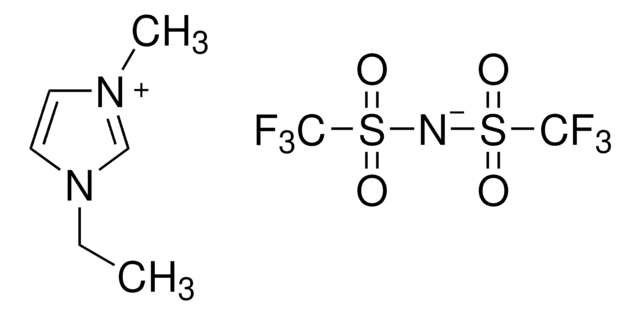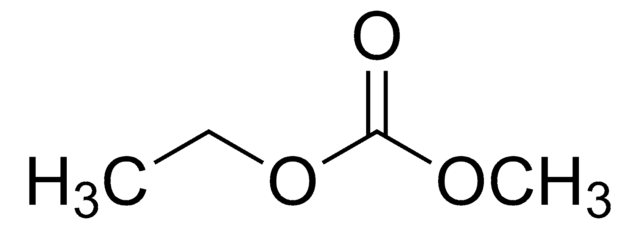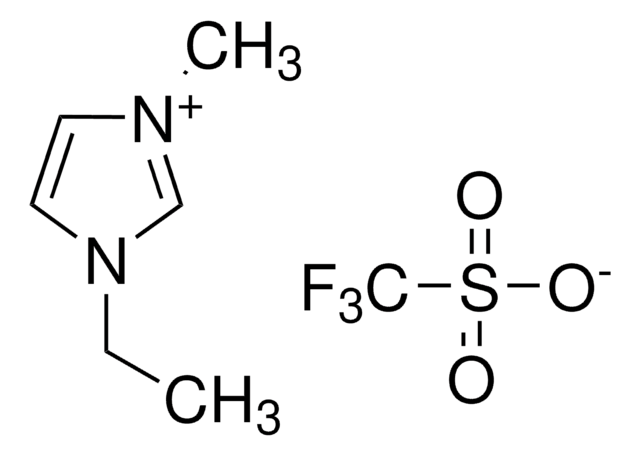900813
1-Ethyl-1-methylpyrrolidinium bis(trifluoromethylsulfonyl)imide
≥99%, H2O <500 ppm
Sinónimos:
N-Ethyl-N-methylpyrrolidinium bis(trifluoromethanesulfonyl)amide, N-Ethyl-N-methylpyrrolidinium bis(trifluoromethanesulfonyl)imide, N-Ethyl-N-methylpyrrolidinium bis(trifluoromethylsulfonyl)imid, Methylethylpyrrolidinium bis(trifluoromethylsulfonyl)imide
About This Item
Productos recomendados
Quality Level
assay
≥99%
form
powder
composition
H2O, <500 ppm
impurities
≤500 ppm H2O
mp
89-91 °C
application(s)
battery manufacturing
SMILES string
CC[N+]1(C)CCCC1.FC(F)(F)S(=O)(=O)[N-]S(=O)(=O)C(F)(F)F
InChI
1S/C7H16N.C2F6NO4S2/c1-3-8(2)6-4-5-7-8;3-1(4,5)14(10,11)9-15(12,13)2(6,7)8/h3-7H2,1-2H3;/q+1;-1
InChI key
BRVHCCPVIILNPA-UHFFFAOYSA-N
¿Está buscando productos similares? Visita Guía de comparación de productos
Categorías relacionadas
General description
Application
Related product
signalword
Danger
hcodes
Hazard Classifications
Acute Tox. 3 Dermal - Acute Tox. 3 Oral - Aquatic Chronic 2 - Eye Dam. 1 - Skin Corr. 1B
Storage Class
6.1A - Combustible acute toxic Cat. 1 and 2 / very toxic hazardous materials
wgk_germany
WGK 3
flash_point_f
Not applicable
flash_point_c
Not applicable
Elija entre una de las versiones más recientes:
Certificados de análisis (COA)
¿No ve la versión correcta?
Si necesita una versión concreta, puede buscar un certificado específico por el número de lote.
¿Ya tiene este producto?
Encuentre la documentación para los productos que ha comprado recientemente en la Biblioteca de documentos.
Artículos
Dr. Sun reviews the recent advances in solid-state rechargeable batteries and cover the fundamentals of solid electrolytes in solid-state batteries, the theory of ion conduction, and the structures and electrochemical processes of solid-state Li batteries.
Here, we present a short review of ionic liquid electrolytes used in state-of-the-art rechargeable batteries including high performance and low-cost aluminum batteries, non-flammable Li-based batteries, and high-cycling and stable dual-graphite batteries. We also outline the key issues explored so as to identify the future direction of IL development.
Nuestro equipo de científicos tiene experiencia en todas las áreas de investigación: Ciencias de la vida, Ciencia de los materiales, Síntesis química, Cromatografía, Analítica y muchas otras.
Póngase en contacto con el Servicio técnico










